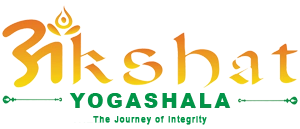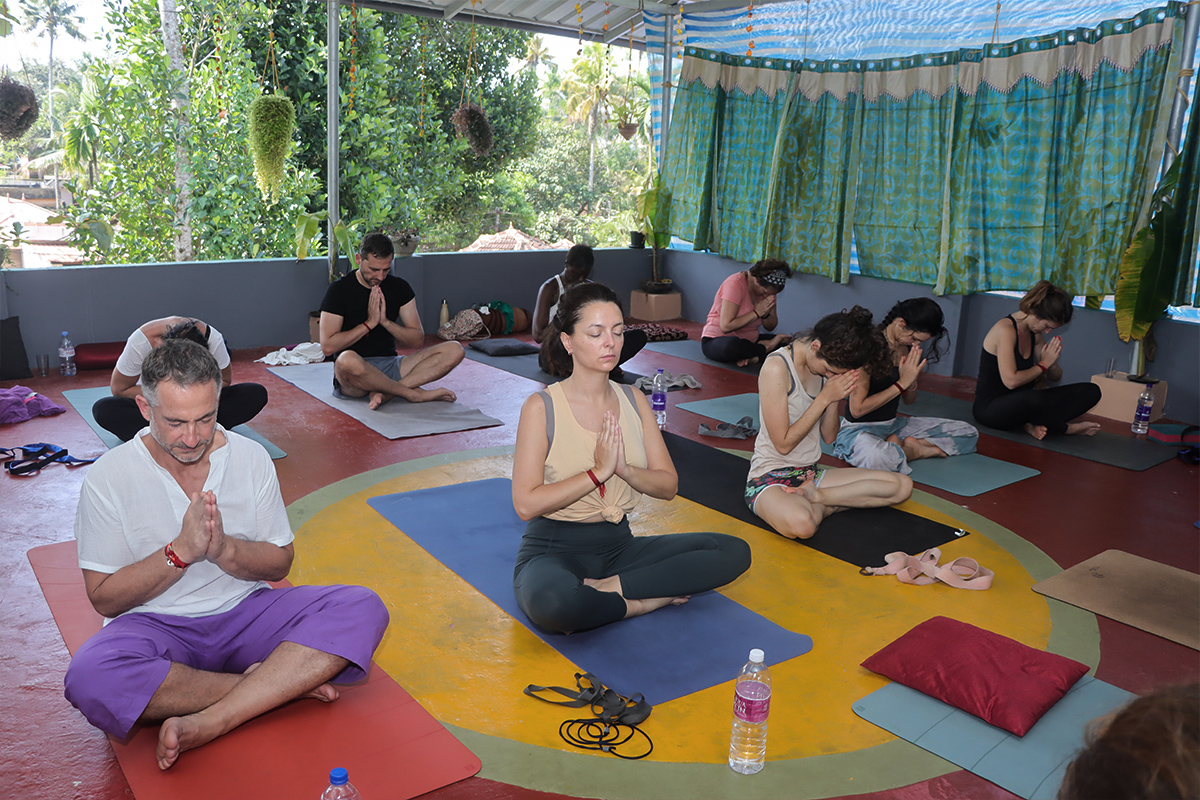YOGA TTC IN Kerala
200 Hour Yoga Teacher Training in Kerala, India
Are you looking for a life-changing yoga-experience? Come join us at Akshat Yogashala in Kerala, India, where we work as a registered yoga school.
we commit to offering a traditional yoga practice to our students, regardless of their level of experience. Our 200-hour teacher training course in Kerala is perfect for aspiring yogis. Our course will guide you from a beginner to a confident teacher with no prior experience required.
Join us on this transformative journey and discover the many benefits of yoga practice.
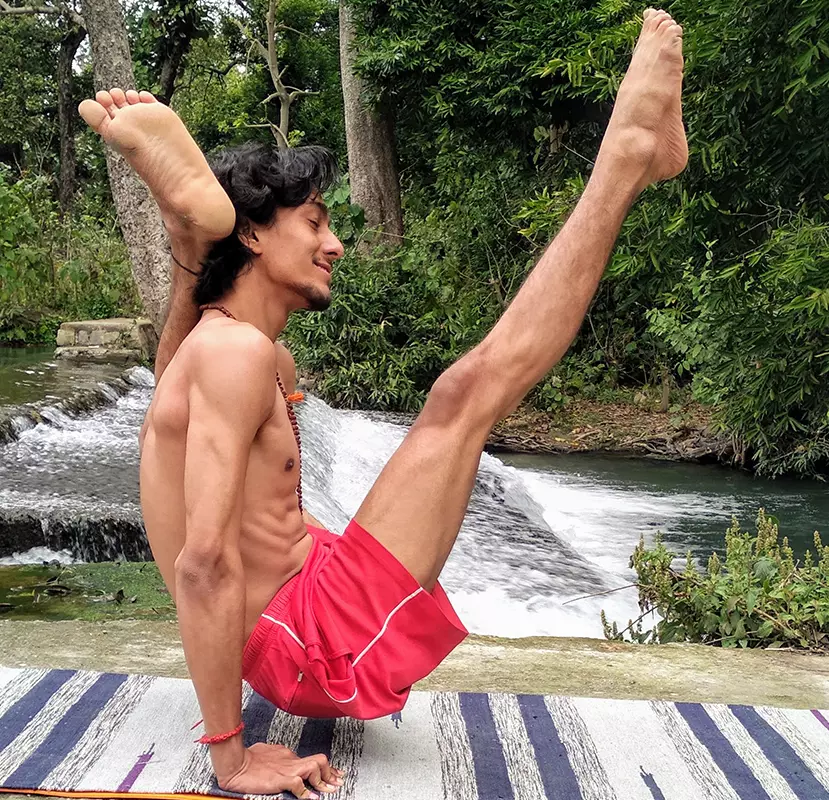
Traditional Hatha Yoga Teaching Training in Kerala From Nath Parampara (Tradition)
Nath, meaning “lord” or “protector,” is used to refer to saints, sages, or gurus of the Nath tradition. The tradition was founded by Shiva, who was then followed by Matsyendra and Goraksha. It is a heterodox siddha (adept) tradition. Hatha Yoga is also known as Natha Yoga, as it was introduced by Nath Sampradaya. The Nath tradition follows Adinath Shiva, although it has many sub-sects.
Guru Gorakshanath founded the yoga tradition still practiced today, and authored around 50 texts on yoga. The Kerala school’s yoga TTC also adheres to this tradition.
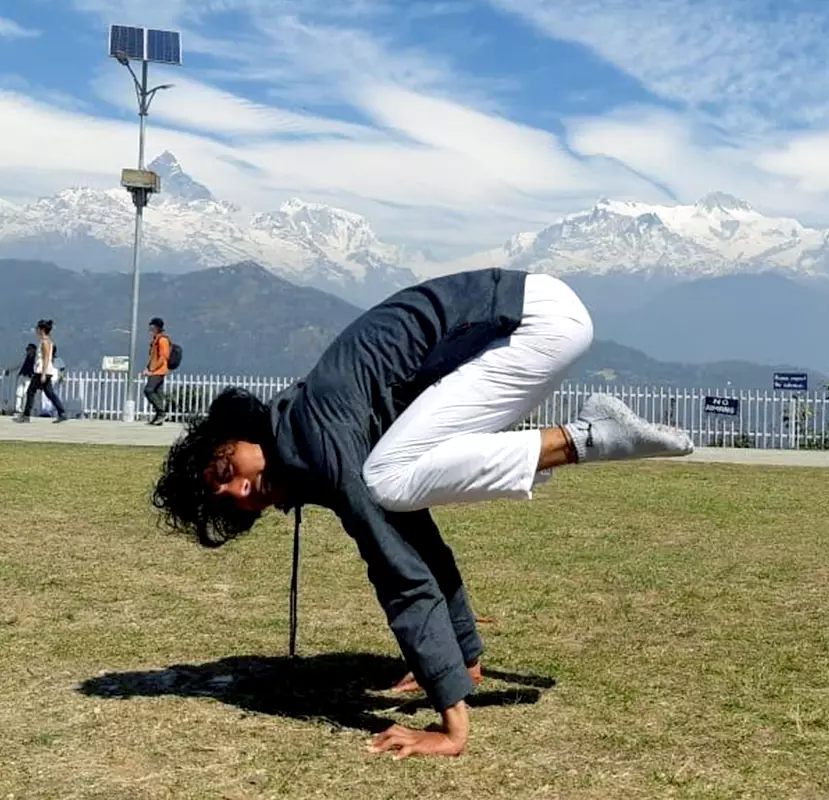
Hatha Yoga – Learn Much More Than Twists and Turns
Hatha Yoga is more than just twisting and turning the body. It is a comprehensive system that encompasses physical postures, breathing techniques, and meditation practices, among other things. Practicing Hatha Yoga helping individuals to achieve balance and harmony in their lives.
Hatha Yoga is an ancient system that promotes physical and mental well-being, practiced by Siddhas, Naths, and Shaivism followers. The followers of Gorakhnath used to practice hatha yoga.
Akshat Yogashala 200-hour yoga teacher training course in Kerala teaches yoga alignments and adjustments of yoga.
Upcoming 200 Hour Yoga Teacher Training in Kerala, India 2022 – 2023
200-hour yoga teacher training cost and Dates
Kerala Yoga Course
Yoga TTC in Kerala – Asana Practice Sessions
The 200-hour yoga course at Akshat Yogashala covers an extensive curriculum. The practical classes while doing yoga in Kerala help students perfect each asana and clear any doubts. You will learn Variations, asanas, postures, and more are all covered in the course with us.
Topics covered under the practical session of asana are –
| Warm up practice Pawanmuktasana series Marjari kriya Vyaghrasana Surya NamaskarStanding yoga posture Tadasana Triyak tadasana Padhastasana Utkatasana Trikonasana Parsva konasana Veerbhadrasana 1 Veerbhadrasana 2 Veerbhadrasana 3 Ardha badha padmottanasana VrikshasanaTwisting yoga posture Ardha matsyendrasana Parivritta janusirshasana Kati chakrasana Vakrasana |
Backward bending yoga posture Bhujangasana Shalabhasana Dhanurasana Matsyendrasana Ushtrasana Kandhrasana Chakrasana Gomukhasana Setu asana RajkapotasanaSeated yoga posture Paschimottanasana Janusirsasana Ardha padma paschimottanasana Pad prasar paschimottanasanaBalanching yoga posture Baka dhyanasana Mayurasana Natrajasana Garudasana |
Meditative asana Sukhasana Siddhasana Padmasana Svastikasana Bhadrasana Inverted posture Semi inverted posture Relaxation yoga posture |
Pranayama – The Science of Breath
Pranayama is derived from the Sanskrit words ‘Prana’ (life force) and ‘Ayama’ (regulation). Prana represents vitality, and Ayama means control. Pranayama is the practice of controlling prana through breathing techniques and subtle breath regulation.
By regulating breath, individuals can balance physical, mental, and emotional states, improving performance and reducing stress and anxiety. Pranayama promotes overall well-being and increases energy levels.
Maharishi Patanjali explained Pranayama in his book
तस्मिन् सति श्वास प्रश्वास योग वि विच्छेदः प्राणायामः (Yoga Sutra 2/49)
tasmin sati shvasaprashvasayorgativichchhedah pranayamah (Yoga Sutra 2.49)
Meaning: Patanjali says when the matter is stable, regulating the natural movement of breath and exhalation is Pranayama.
The 200-hour Yoga Teacher Training in India explains the following Elements of Pranayama.
These are different techniques and practices that are part of pranayama:
(1). Pancha Prana: Five primary types of prana, which are responsible for different physiological functions in the body.
(2). Pancha Upaprana: Five types of sub-pranas, which assist in the functions of the five primary pranas.
(3). Natural and yogic breathing: Natural breathing is the spontaneous, whereas yogic breathing is a conscious regulation of the breath.
(4). Puraka: Inhalation or the process of taking in air.
(5). Recaka: Exhalation or the process of releasing air.
(6). Kumbhaka: Breath retention or holding the breath after inhalation or exhalation.
(7). Nadi Shodhana: alternate nostril breathing, involves breathing through one nostril at a time while blocking the other.
(8). Anulom Vilom: A pranayama technique that involves alternate nostril breathing with a ratio of inhale, hold, and exhale.
(9). Bhastrika: A breathing technique that involves rapid, forceful inhalations and exhalations.
(10). Ujjayi: A pranayama technique that involves constricting the throat to create a hissing sound during inhalation and exhalation.
(11). Surya Bhedi: A pranayama technique that involves inhalation through the right nostril and exhalation through the left nostril.
(12). Chandra Bhedi: A pranayama technique that involves inhalation through the left nostril and exhalation through the right nostril.
(13). Sheetali: A pranayama technique that involves inhaling through the mouth with the tongue rolled into a tube shape.
(14). Sheetkari: A pranayama technique that involves inhaling through the teeth with the tongue behind the teeth.
(15). Bhramari: A pranayama technique that involves making a humming sound during exhalation while keeping the mouth closed.
Shatkarma or Six Cleansing Techniques
200 Hour Yoga Teacher Training in Kerala
कर्म षटकमिदं गोप्यं घटशोधनकारकम्।
विचित्रगुणसंधायि पूज्यते योगिपुंगवैः।। (Hatha Yoga Pradipika 2/23)
karma ṣhaṭkamidaṃ ghopyaṃ ghaṭa-śodhana-kārakam |
vichitra-ghuṇa-sandhāya pūjyate yoghi-pungghavaiḥ ||
Hatha Yoga Pradipika 2:23 says to purify the body to remove internal wastes before pranayama. As the Nadis filled with faeces won’t work with the life cycle, and hindering Sadhana.
Performing these actions purifies different body parts, leading to complete internal purification. Here’s some easy-to-understand information about these techniques.
These shatkarma techniques are –
– Dhauti
– Basti
– Neti
– Nauli
– Trataka
– Kapalbhati
(a). Dhauti – Dhauti is a Sanskrit word that means “purification.” We derive it from the root word “dhau” which means “to wash” Dhauti.
(b). Kriya: for the complete purification of the internal body system. Kriya has four types:
(1). Antara (internal) Dhauti
(2). Danta (teeth) Dhauti
(3). Hrida (heart or chest region) Dhauti
(4). Mula Shodhana (rectal cleansing).
(c). Basti: involves colon and rectum cleansing. The modern name for Basti Kriya is enema. There are two types of Basti.
(1). Jala Basti (b). Sthala Basti.
(d). Neti: Nasal cleansing exercise. This eliminates the breathing irregularities.
(e). Nauli: essential for cleansing and toning the stomach and its internal organs.
(f). Trataka: improves vision and focus. It is useful for mental concentration. There should be a distance of about 2 meters between the eye and the candle.
(g). Kapalbhati: Pranayama exercise that purifies the body. The word Kapalbhati is made up of two words: Kapal means ‘forehead’ and Bhati means ‘sign.”
200-Hour Authentic Ashtanga Vinyasa Yoga Teacher Training in Kerala, India
Join the 200-hour Ashtanga Vinyasa Yoga Teacher Training at Akshat Yogashala in Kerala, India. Learn to unite the body, mind, and spirit through specific postures and breathwork.
Get guided by experienced teachers in yoga philosophy, anatomy, and teaching methods. Gain practical experience and certification. Ashtanga Vinyasa Yoga unites the body, mind, and spirit through specific postures and breathwork.
let us combines Ashtanga and Vinyasa principles for an authentic and traditional practice. Akshat Yogashala offers Vinyasa Yoga and Ashtanga Yoga Teacher Training in Kerala. We give a comprehensive and authentic approach to yoga education.
Whether you want to pursue a career in yoga teaching or deepen your personal practice. Transform your practice with the 200-hour Ashtanga Vinyasa Yoga Teacher Training in Kerala, India.

Philosophy (Darshan)
Yoga Darshan connects nature, humanity, and spirituality to promote holistic development. It highlights the unity of body, mind, and soul.
Six Orthodox and Two Unorthodox Philosophy
The 200-hour Yoga Teacher Training course in India covers the six orthodox philosophies, known as Shad Darshana. These philosophies include Sankhya, Yoga, Nyaya, Vaisheshika, Mimamsa, and Vedanta.
Origin of Yoga:
Shiva discovered it, passed knowledge to Parvati, who then taught the saptarishis or the seven sages. These sages are considered the founders of this divine practice.
Purushartha Chatusthaya (Four Aims of Human Life)
Purushartha describes four goals of human life, dharma (moral values), Artha (prosperity), kama (pleasure) and moksha (liberation).
Different paths of yoga:
There are different paths of yoga: Karma Yoga, Bhakti Yoga, Raja Yoga and Jnana Yoga.
Ashtanga Yoga (Eight Limbs of Yoga) and Hatha Yoga
Yoga has eight limbs: Yama, Niyama, Asana, Pranayama, Pratyahara, Dharana, Dhyana, and Samadhi. These limbs create balance in body, mind, spirit. Mastery of yoga’s limbs leads to transformative benefits. These limbs work together to create balance and harmony. They give a framework for active participation, enabling practitioners to take control of their growth and development.
The Sadhak Tattva in Yoga:
Sadhak Tattva are essential supporting elements in the practice of yoga. These include Utsaah (enthusiasm), Sahas (courage), Dherya (patience), Tatvagyaan (philosophy), Dridh Nishay (determination), and Jansang (renunciation). Practitioners can use these elements to take an active role in their growth and development in yoga. Sadhak Tattva helps individuals understand yoga better and achieve success in their journey.
Obstacle Element in Yoga (Badhak Tattva)
Hatha Yoga Pradipika states the six obstacle elements of yoga or Badhak Tattva. These are:
(a). Atyaharah (Eating more than required)
(b). Prayasascha (Doing lots of Hard Work):
(c). Prajalpo (Talking much) : excessive talk or chatter.
(d). Niyamagrahah (Not following the rules)
(e). Jana Sangghascha (Getting in touch with many people) : excessive socializing or engaging in too many social activities
(f). Laulyaṃ (Fickle Mind) : difficult to focus or concentrate on a particular task or goal.
Anatomy and Physiology of the Human Body
The yoga teacher training program in Kerala covers the Anatomy and Physiology of the Human Body. This class also connects modern science with yogic science and explains the core of yoga. The Anatomy class explains the structure of the body, while the physiology class describes its functioning.
The 11 systems of the body get covered in it.
(A).Integumentary Systems (B).Nervous Systems (C).Skeletal Systems (D).Endocrine Systems
(E).Muscular Systems (F). Cardiovascular Systems (G). Lymphatic Systems (H).Respiratory Systems
(I).Urinary Systems (J).Reproductive Systems (K).Digestive Systems.
Naturopathy
Naturopathy is a scientific and holistic self-healing system of the body using natural elements. It awakens the inherent power of the body to regain its health and fitness. The theoretical classes of yoga TTC in Kerala at Akshat Yogashala explain the concept of Panchamahabhutas.
“SARVAM DRAVYAM PANCHABHOUTIKATVAM”
Meaning – Everything on the earth are formed by Panchamahabhutas. These five elements – Earth, Water, Fire, Air, and Ether – are believed to be the foundational constituents of the body.
During the 200-hour yoga ttc in Kerala, the Naturopathy session at Akshat Yogashala provides Mud Therapy. It is a healing technique that uses moistened earth to improve physical and mental health.
Mantra?
Mantra is a collection of divine words by which we can meet extreme spirituality and destroy negative obstacles. “Man” in Mantra means “Mind” and “TRA” means “Power”.
Mantra Reciting
Reciting the mantra helps the person in getting supreme knowledge and with this, the mind gets calm. With this, one gets free from the bondage of birth and death.
Types of Mantra
There are three types of mantras. These are –
- Bija Mantra (Root Mantra) – It connects you to the seven chakras of the body and Hindu deities.
- Saguna Mantra (with form) -It awakens the actual form of a specific deity.
- Nirguna Mantra (without form) – It covers the fundamental truths mentioned in yogic philosophy.
The course of 200-hour Yoga Teacher Training Kerala, India at our yoga school explains the following mantras: Obstacle removal mantra Guru mantra
- Pranav mantra
- Teacher and student mantra
- Mantra for peace
- Patanjali mantra
- Maha mritunjaya mantra
- Realization mantra
- Food mantra
- Completeness mantra
Dhyana (Meditation)
Meditation or Dhyana is a self-development technique that has been practiced around the globe for ages. There is no aspect of your life that cannot be improved through meditation, be it business, relationships, or health. But the highest aim of meditation is to recognize one’s own divinity. Meditation is done to know your true self.
Obstacle in Meditation
It sounds so easy when you read about meditation. But it is not as easy as you think. To be a master in meditation, you have to go through many hurdles or obstacles. but don’t worry we will help you in overcoming all of them.
Role of Asana and Pranayama in Meditation
Yoga asanas that offer the most benefits of meditation include Padmasana or Lotus Pose. Additionally, practicing Pranayama before meditation can help you focus better.
Pranava Sadhana
Pranava Sadhana, also known as Aum Yoga Meditation. This is an ancient Hindu meditation practice that involves chanting the sacred sound of “Om.” The Bhagavad Gita, The Upanishads, and The Patanjali Yoga Sutras mention this practice.
Chakra Meditation
Chakra Meditation balances the body’s 7 energy centers to promote well-being and good health.
Five Element Meditation (Pancha Tattva Dhyana)
Living organisms have Five elements – Earth, Water, Fire, Air, and Ether. These are present in their bodies and minds. Through meditation on these elements, we can achieve a state of balance within ourselves.
Full Moon Meditation (Purnima Dhyana)
Full Moon Meditation is a spiritual practice that connects to the moon. It refreshes the body, mind, and soul. People do Purnima Dhyana by sitting under the moonlight facing east or west.
Breathe meditation (Anapana)
Anapana, an entry-level meditation, promotes instant relaxation and stress relief by focusing on your breath.
Guided Meditation
Guided Meditation involves following the instructions of another person to help focus the mind. As Listening to songs or podcasts can lead to deep relaxation and rest.
Nachiketa Dhyana
Nachiketa Dhyana is an essential type of meditation that is performed to achieve progress in life.
Vipassana Meditation
The term “Vipassana” means to look into reality. This form of meditation observes the thoughts, feelings, and emotions of one without making any judgment. It is the best type of mindfulness practice.
Yoga Nidra
Yoga Nidra, also known as “Yogic Sleep” is a type of effortless relaxation where you are said to lie down, after which the teacher guides you to perform it.
Trataka
Trataka is a Sanskrit word that means “to gaze.” It is a Shatkarma technique that involves focusing on a candle flame from a specific distance.
Mantra Meditation
Chanting mantras can heal your inner self. As they generate a positive aura that rejuvenates the body, mind, and soul.
Yoga Teacher Training Course Daily Schedule
| Time | Training |
|---|---|
| 6:15 –8:00 am | Mantra Chanting, Pranayama & Guided Meditations/ Kriya practice |
| 8:015– 09:45 am | Asana Practice |
| 9:45 – 11:00 am | Breakfast |
| 11:00 – 1:00 pm | Yoga Anatomy & Physiology/ Yoga Philosophy |
| 1:00 – 3:00 pm | Lunch Break. |
| 3:00 – 4:00 pm | Adjustments/Alignments class/Teaching Methodology |
| 4:00 – 4:50 pm | Student Teaching Practice |
| 5:00 – 6:00 pm | Asana Classes |
| 6.00 – 7:00 pm | Methodology/teaching practice/Guided Meditation |
| 7.45 – 8:30 pm | Sat Sangam – Q&A on meditation philosophy /spirituality related topics (Tuesday& Thursday)Sunday is Holiday |
What does the course fees include – Yoga TTC in Kerala?
Akshat Yogashala offers a top-notch yoga teacher training program in Kerala. We follows the syllabus, schedule and curriculum outlined by Yoga Alliance, USA. Our team prepares a balanced schedule that includes proper timing for rest, excursions, food, and personal time. Our school gives equal importance to both theoretical and practical classes so that our students learn yoga from scratch.
The daily schedule of the course is :-
What does the course fees include – Yoga TTC in Kerala?
There are several options for yoga teacher training in Kerala, including:
- 24 Days Accommodation
- Daily nutritious vegetarian meals and herbal tea
- Weekend excursions
- We give course materials (notebooks, yoga mat, cleansing kit)
- 2 to 3 Days Himalayan Village Tour Yoga Retreat added extra cost 5,000 INR.
Principles and Guidelines – Kerala Yoga Course
- The classes starts early in the morning time.
- You must always behave with decency.
- Follow the rules and regulations of Akshat Yogashala.
- Note that the course fee will not be refunded.
- At Akshat Yogashala, we prohibit smoking, alcohol consumption, and non-vegetarian food.
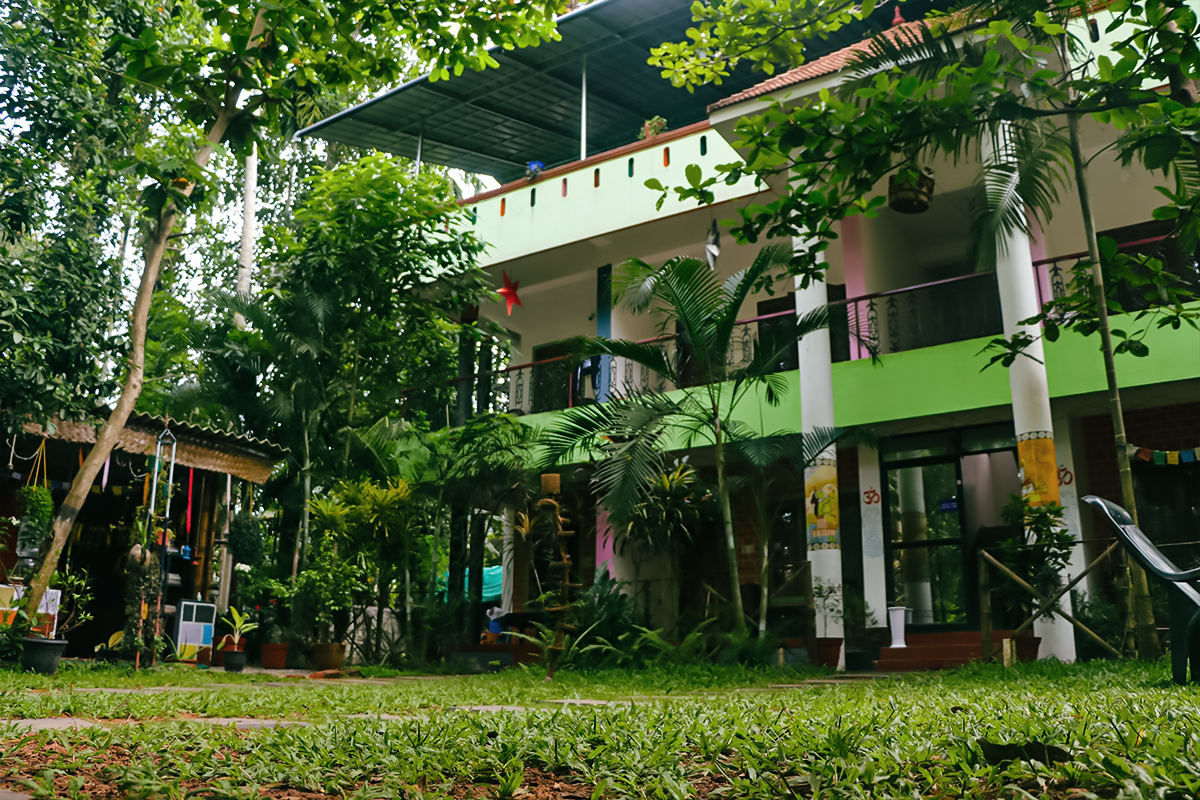
Accommodation
Akshat Yogashala provides clean, spacious accommodations occupied with a positive atmosphere and aura.
Our team is always available to welcome you. We guarantee access to essential amenities and facilities throughout your stay.
In addition, the breathtaking view from the school provides a calming atmosphere, promoting ultimate relaxation.
Food
Yoga practice prefers Sattvic Food. So Akshat Yogashala offers students a Sattvic diet to support their yoga practice. We prepared the meal in a hygienic environment.
You will serve three times daily meal with herbal tea and drinks throughout the day.

Yoga Alliance Certification – RYT200
We registered Akshat Yogashala with the Yoga Alliance and follows their standards. After Completing their 200-hour yoga teacher training course qualifies you to become a Registered Yoga Teacher (RYT).
This 200-hour yoga TTC course includes assignments, internships and exams. You will receive a certificate from the school after complete it. This certificate allows you to register as an RYT-200 (200 Hours Registered Yoga Teacher).
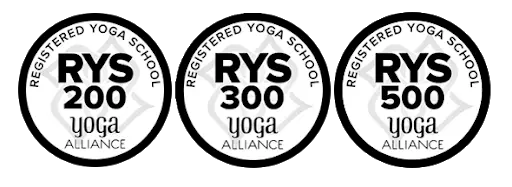
Why Akshat Yogashala is the best for the 200 Hour yoga teacher training in Kerala?
- You can take a 200-hour yoga teacher training course. The school is located in a beautiful place in Kerala, perfect for practicing yoga.
- We commit the teachers and staff to create a homey and friendly environment.
- The yoga course teaches many things and is suitable for everyone.
- Learn yoga with experienced teachers, practice in a peaceful environment at Akshat Yogashala.
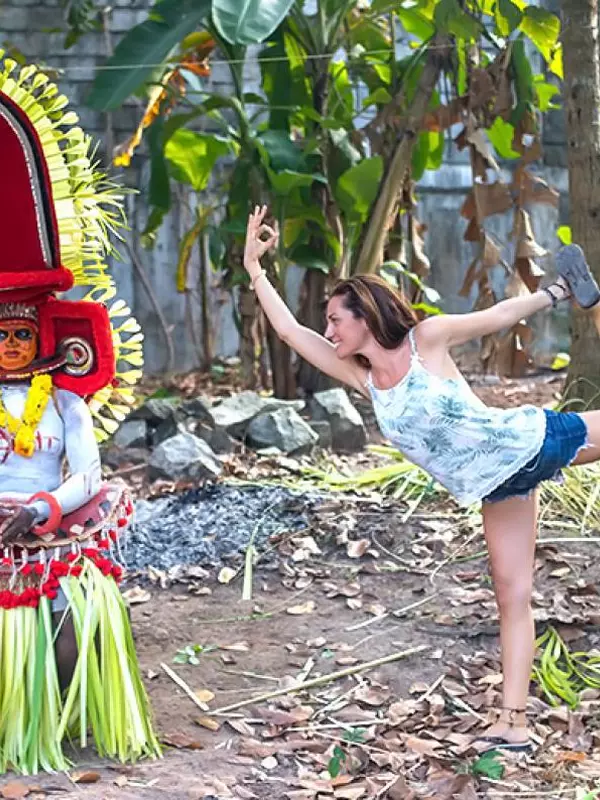
Upcoming 200 Hour Yoga Teacher Training in Kerala, India 2022 – 2023
200-hour yoga teacher training cost and Dates
Student Testimonial
Yoga Teacher Training Student’s Review
We conduct yoga teacher training in Rishikesh, Goa, and Kerala. We get lot of love and belief from students. These reviews by our ex-students are an example of this.
Yoga Teacher Training Retreats FAQ
Breakfast will typically have two fruits, fruit juice (packaged) and upma/poha/porridge/sprouts/idli. You will typically have one portion of dal, vegetable curry, chapatis, and rice, along with yogurt, during lunch and dinner.
Getting a visa for India is easy. You can apply online for an electronic visa (evisa), which generally gets approved within 24 -96 hours.
Yes, some rules help create a sattvic (yogic) environment. Trainees in residence are not allowed to consume drugs, eggs, meat, alcohol, and tobacco. No PDA allowed. Students will be asked to leave the course without warning if found to be breaking these rules
Yes, indeed, you would get opportunities to teach your fellow trainees under the supervision of a senior teacher.
Yes, our school registration id is 389001
https://www.yogaalliance.org/SchoolPublicProfile
CHECK-IN – Please arrive anytime on 1st day during daylight hours
CHECK OUT – CERTIFICATE DISTRIBUTION on the last day of the program at 11.30 am. Ideally, you should check out this day.
1. Bug spray/bracelet (might not be required)
2. Personal Toiletries
3. Any medications
4. Indian Mobile sim – can be bought in Delhi or Rishikesh
5. Fees in cash (INR). USD and Euro are also accepted with 1% and 1.5% exchange fees, respectively
Akshat Yogashala, a registered yoga school in Rishikesh offers an RYT (Registered Yoga Teacher) certification.
15 to 20 students in a single batch
The different course has different fee structure. The fee for 200 hours fees 1199$.
The 200 Hours Yoga Teacher Training Course can be opted for by practitioners of all levels. It is of 24 days. The 300 Hours YTTC is an intermediate-level course and can be joined by students who are already qualified with a beginner’s degree. While the 500 Hours Yoga Course or the Master Level course combines the teaching of the 200 and 300 hours and makes you aware of the practice from the root to the tip.
The certification of 200 Hours Yoga Course is enough to teach yoga but this is also true that there is no limit to gaining and learning
180 Hours in class and 20 Hours for self-study.
Rishikesh, an ancient city is also found mentioned in spiritual Hindu texts and Vedas with different names. Since ages ago, people are opting for this destination for getting peace and salvation. Moreover, the most pious rives in INDIA, The Ganges flows here in this city making the place pious and divine. The atmosphere of Rishikesh is perfect if you are wishing to do yoga or other spiritual activities.
As said earlier, 200 Hours Yoga TTC is a beginner-level course, so, that clearly means you can become a yoga instructor with any prior qualification. Just your honest and hard dedication is required during the yoga course tenure.
Everything depends on your personal choice but if you wish to practice yoga with ease and certification, then we suggest you join Akshat Yogashala in Rishikesh.
500 Hours Yoga Teacher Training Course
Join any of the Yoga Alliance-affiliated courses from a registered yoga school in Rishikesh. After the successful completion of it, you can then start working as a yoga instructor. 200 Hours Yoga TTC is the most preferred course among the registered courses offered by yoga schools in India.
No, all yoga certifications are not the same. The difference occurs in the course duration and affiliation.
The 200-Hour Yoga Teacher Training in Rishikesh is for beginner-level students who want to start their journey. With this, you can start your learning even without any prior knowledge or experience. So, if you are never aware of yoga or its various aspects then there is no need to worry as you can go on the journey from a novice to an experienced learner.
RYT or Registered Yoga Teacher certification allows you to teach in a yoga school. You will get an RYT certificate only when you complete a course from a Yoga Alliance-registered yoga school.
The Yoga Teacher Training 200-Hour in Rishikesh is for beginner-level students who want to start their journey. With this, you can start your learning even without any prior knowledge or experience. So, if you are never aware of yoga or its various aspects then there is no need to worry as you can go on the journey from a novice to an experienced learner.
